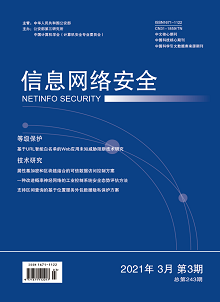DNS rebinding attack based on the domain name system (DNS) can effectively bypass the homologous strategy and firewall, steal sensitive information, and control intranet devices, causing great harm to the Internet community. DNS rebinding can only be realized by setting malicious domain name. Aiming at the detection of malicious domain names related to DNS rebinding, this paper proposes a DNS rebinding classifier (DRC) based on passive DNS data analysis. By introducing passive DNS data, the domain names related to DNS rebinding are characterized from the four measure sets of domain name, time, abnormal communication and malicious behavior. Based on C4.5 decision tree, KNN, SVM and naive Bayes classification methods, the data are classified, trained and weighted. Cross validation experiments show that the accuracy of DRC model for identifying related malicious domain names can reach more than 95%. Compared with the malicious domain name detection tool FluxBuster, DRC model can identify related malicious domain names more accurately.

